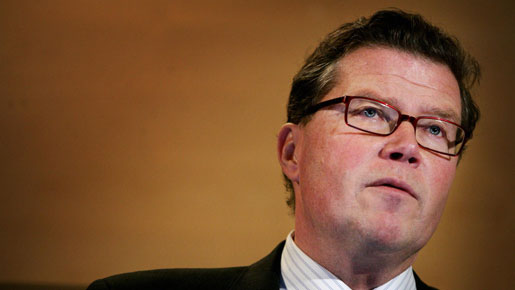
For Leif Johansson, CEO of Swedish-based Volvo AB, the challenge must at times seem Herculean. With a population of just over nine million souls, Sweden has produced a remarkable number of world players, including AstraZeneca, Electrolux, Ericsson, Sandvik, Scania, Skanska and Volvo. The country is justifiably proud of its achievement in engineering products, which account for over 50 percent of its output and exports. Perhaps its most iconic product was the Volvo car, known the world over for its safety and reliability.
When Johansson stepped into the top job in 1997 the company had been going through several years of uneven results and strategic turmoil. Huge losses triggered by the economic downturn in the early 1990s had spurred the board to seek alliances with Renault and, later, Mitsubishi. These proved problematic and were dissolved by 1994, when a new chief executive adopted a strategy of selling off all non-core businesses and investing in a new image for the Volvo car that would suit a younger, trendier market.
Johansson decided to continue the push to sell the more youthful image in Volvo cars. At the same time, he initiated a project to totally revamp the company’s line of heavy-duty trucks, with many improvements in the areas of safety, haulage economy, fuel consumption and environmental performance.
Industry observers, however, were suggesting that Volvo lacked the economies of scale to remain independent, noting that Volvo made only 387,400 cars in 1997. This was less than its production levels in the late 1980s, when the Volvo was the vehicle of choice for safety conscious American drivers, and well below the output of its luxury brand rivals, Mercedes-Benz and BMW. Johansson’s answer was that Volvo needed “to stay out of what everyone else is doing simply because we cannot compete with their volumes.”
What no one expected was that he would do this by selling off the car division to the Ford Motor Company and focussing solely on Volvo’s higher margin truck operations. His countrymen were stunned at the move and were justifiably worried about the loss of jobs and brand recognition.
Johansson, however, was determined to push ahead with his plans to turn Volvo AB into a world leader in heavy trucks, buses, industrial equipment, marine and aeronautical engines. He started to buy up shares in Scania, the other leading Swedish producer of trucks, further increasing fears of massive job layoffs in the country. It was the European Union that finally halted the possibility of the merger on the grounds that it would breach antitrust laws.
Hard decisions
All this is a far cry from Johansson’s first job as a teenager working on an assembly line at the Volvo plant in Gothenburg. The son of a prominent Swedish industrialist, he earned his engineering degree from Chalmers University of Technology before working in the research and development team at Centro Morgardshammar. Two years later he joined Husqvarna, moving to Electrolux, in 1983. He rose quickly to become president in 1991, and chief executive in 1994, but after only four years in that post he moved to take the reins at Volvo.
Over the next twelve years Johansson earned a reputation as a chief executive who can take difficult and often unpopular decisions on the road to achieving world leadership for his organisation. The failure of the Scania bid did not dissuade him from his intention to build a strong international business in trucks and heavy equipment. In 2001 Volvo bought Renault’s heavy-duty truck unit which included Mack Trucks in the United States, creating the world’s second largest heavy truck brand behind Daimler-Benz.
Despite the successful acquisition, the economic downturn put the company into the red for the year. Johansson continued to implement his strategy of adding product and moving into Asia and eastern Europe with a 2003 deal to start manufacturing heavy-duty trucks in China, and, later, Russia.
The trucking industry is heavily influenced by both shifts in the economy and changes in environmental legislation. It is perhaps fortunate that Johansson is known to be a champion of the idea that business and environmental awareness can go hand in hand and should thrive off each other. Having been challenged on the issue by his 13 year old daughter one day, he said: “I decided that to the extent that we have intellectual capacities, it’s better to use them to try to build things that are good and can be defendable at the family’s Saturday breakfast table.”
However, successive rounds of increasingly tough legislation are creating spikes in sales as fleet buyers put their orders in before the implementation of each new round significantly adding to the cost of a $100,000 truck. The result has been a yo-yo of sales figures. Then came the current global recession, and sales across the industry have hit the skids.
In April this year, Volvo warned that sales in Europe are expected to halve, while those in the US will drop by 30 to 40 percent. Johansson is optimistic about an early recovery in the Chinese market, but warns that there will be a shake-out in the industry as all manufacturers are halting production while they sell off stock to improve their liquidity. Volvo, he insists, is in a strong position to weather the storm.
“After the strong growth of recent years, both through acquisitions and organically, the Volvo Group now has sufficient critical mass to be globally competitive. In the next few years, the focus will be directed toward strengthening profitability by increasing productivity and internal efficiency,” he says. It will be tough, but with his track record he’s already proven he’s the man for the job.

